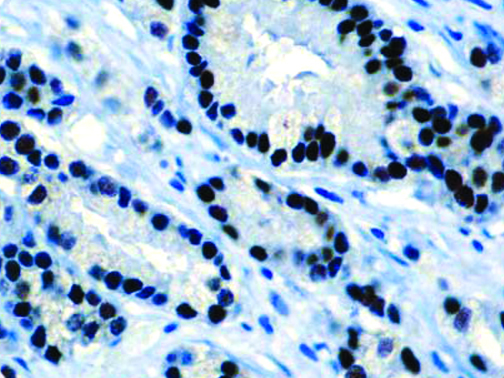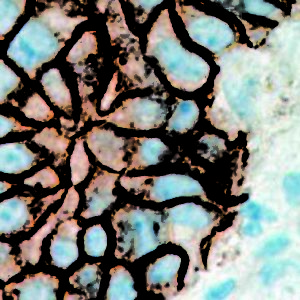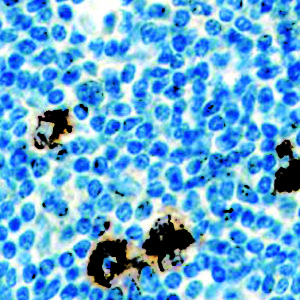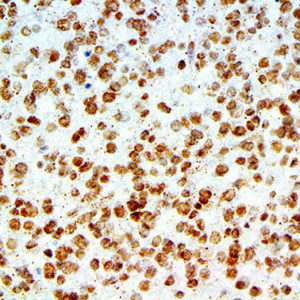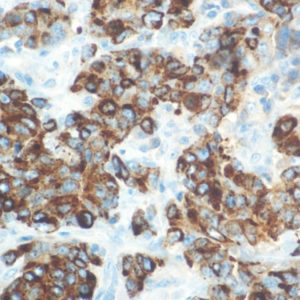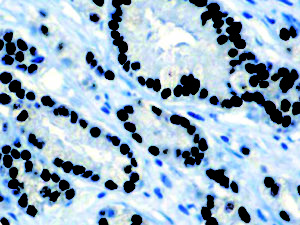
IHC of Androgen on a FFPE Prostate Tissue
| Intended Use | For In Vitro Diagnostic Use | |||||||||||||||||||||||||||||||||||
| Summary and Explanation | The androgen receptor (AR) is a type of nuclear receptor which is activated by binding of either of the androgenic hormones testosterone or dihydrotestosterone. The main function of the androgen receptor is as a DNA-binding transcription factor which regulates gene expression. However, the androgen receptor has additional functions independent of DNA binding. The AR signaling pathway plays a key role in development and function of male reproductive organs, including the prostate and epididymis. AR also plays a role in nonreproductive organs, such as muscle, hair follicles, and the brain. This antibody reacts with the androgen receptor and also with the newly-described A form of the receptor. This antibody does not cross-react with estrogen, progesterone or glucocorticoid receptors. Abnormalities in the AR-signaling pathway have been linked to a number of diseases, including Prostate Cancer, Kennedy’s Disease and male infertility. | |||||||||||||||||||||||||||||||||||
| Antibody Type | Mouse Monoclonal | Clone | BSB-4 | |||||||||||||||||||||||||||||||||
| Isotype | IgG1 | Reactivity | Paraffin, Frozen | |||||||||||||||||||||||||||||||||
| Localization | Nuclear | Control | Prostate, Prostatic Adenocarcinoma | |||||||||||||||||||||||||||||||||
| Presentation | Androgen receptor is a mouse monoclonal antibody derived from cell culture supernatant that is concentrated, dialyzed, filter sterilized and diluted in buffer pH 7.5, containing BSA and sodium azide as a preservative. | |||||||||||||||||||||||||||||||||||
| Availability |
| |||||||||||||||||||||||||||||||||||
| Note: For concentrated antibodies, please centrifuge prior to use to ensure recovery of all product. | ||||||||||||||||||||||||||||||||||||
